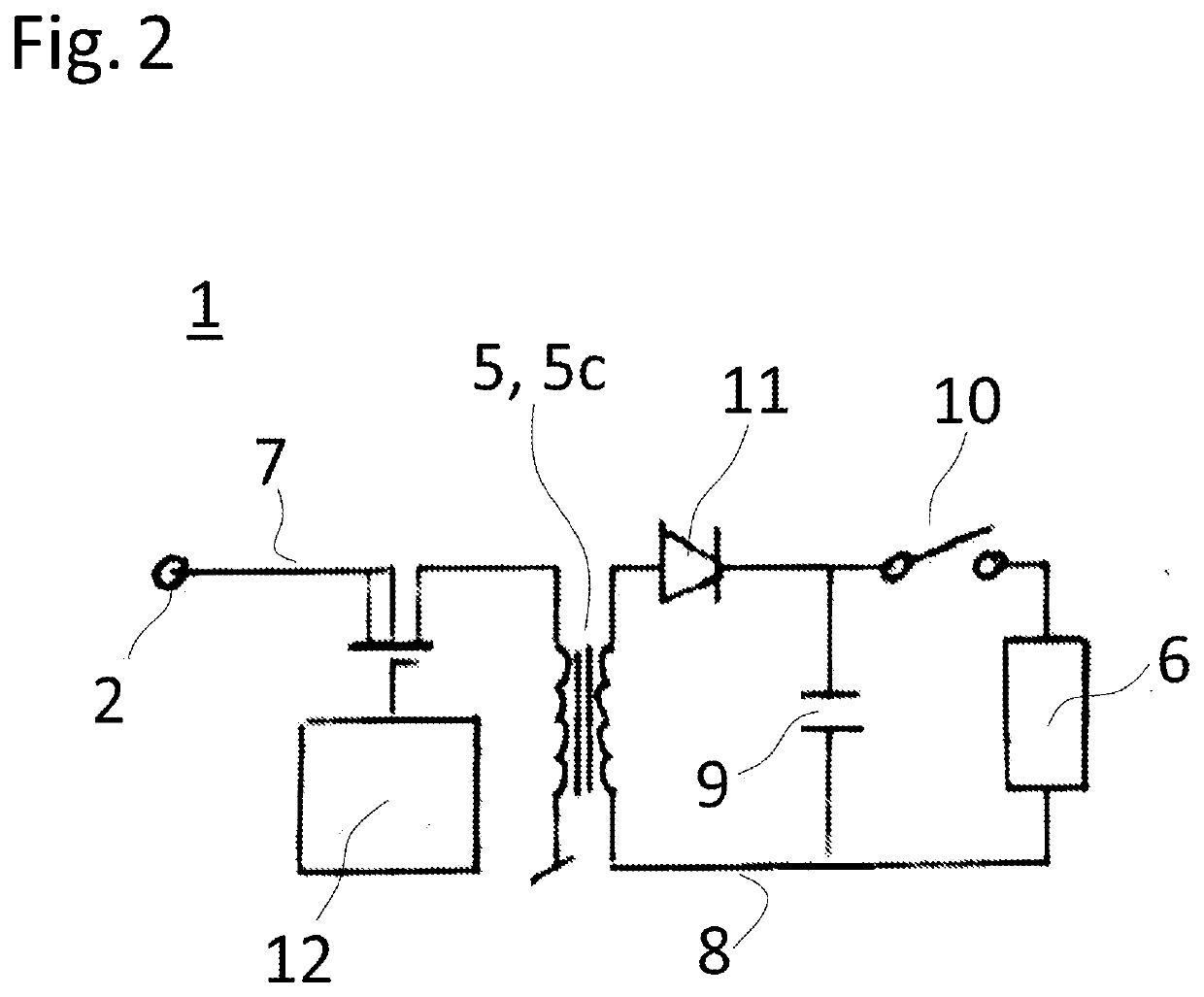Power supply network and hybrid vehicle
a power supply network and hybrid technology, applied in the direction of machines/engines, exhaust treatment electric control, transportation and packaging, etc., can solve the problems of not allowing the combustion engine itself, the catalyst may still be too cold to provide optimal performance, and the ehcs up to now cannot be used in hybrid electric vehicles easily, so as to achieve the effect of easy integration
- Summary
- Abstract
- Description
- Claims
- Application Information
AI Technical Summary
Benefits of technology
Problems solved by technology
Method used
Image
Examples
first embodiment
[0029]FIG. 1 schematically shows the power supply network 1 according to the invention. The power supply network 1 is installed in a hybrid electric vehicle. Many details of the hybrid electric vehicle are omitted so as to simplify the description. The power supply network 1 includes a high-voltage battery 2 providing 350 VDC, a low-voltage battery 3, and an electric machine 4. Furthermore, the power supply network 1 includes a converter arrangement 5a, 5b, 5c which includes an AC / DC-inverter 5a for powering the electric machine 4, a DC / DC-converter 5b for powering a vacuum pump (not shown) and a power steering (not shown), and an inverter 5c for powering an electrically heated catalyst (EHC) 6. A wiring between the components follows schematically from FIG. 1. Details about the inverter 5c for powering the EHC 6 are disclosed with more detail below referring to FIG. 2.
[0030]As shown, the power supply network 1 is arranged to provide a first supply voltage, from the 350 VDC high-vol...
second embodiment
[0034]FIG. 2 schematically shows the power supply network 1 according to the invention. The power supply network 1 again is installed in a hybrid electric vehicle. The power supply network 1 here includes a capacitor 9. The capacitor 9 is arranged to be charged from the first power subnet 7, namely by the high-voltage battery 2, and is arranged to provide the second supply voltage to the second power subnet 8. To achieve this, the inverter 5c is configured to step down the 350 VDC provided by the high-voltage battery 2 to, in this case, 48 VDC supply voltage for the EHC 6. The wiring of the components follows from FIG. 2.
[0035]As may be seen from FIG. 2, the inverter 5c includes, as well as in the first embodiment shown in FIG. 1, a primary transformer winding which is part of the first power subnet 7 and a secondary transformer winding which is part of the second power subnet 8. As the inverter 5c thus operationally connects the first power subnet 7 to the second power subnet 8 whi...
PUM
 Login to View More
Login to View More Abstract
Description
Claims
Application Information
 Login to View More
Login to View More - R&D
- Intellectual Property
- Life Sciences
- Materials
- Tech Scout
- Unparalleled Data Quality
- Higher Quality Content
- 60% Fewer Hallucinations
Browse by: Latest US Patents, China's latest patents, Technical Efficacy Thesaurus, Application Domain, Technology Topic, Popular Technical Reports.
© 2025 PatSnap. All rights reserved.Legal|Privacy policy|Modern Slavery Act Transparency Statement|Sitemap|About US| Contact US: help@patsnap.com


